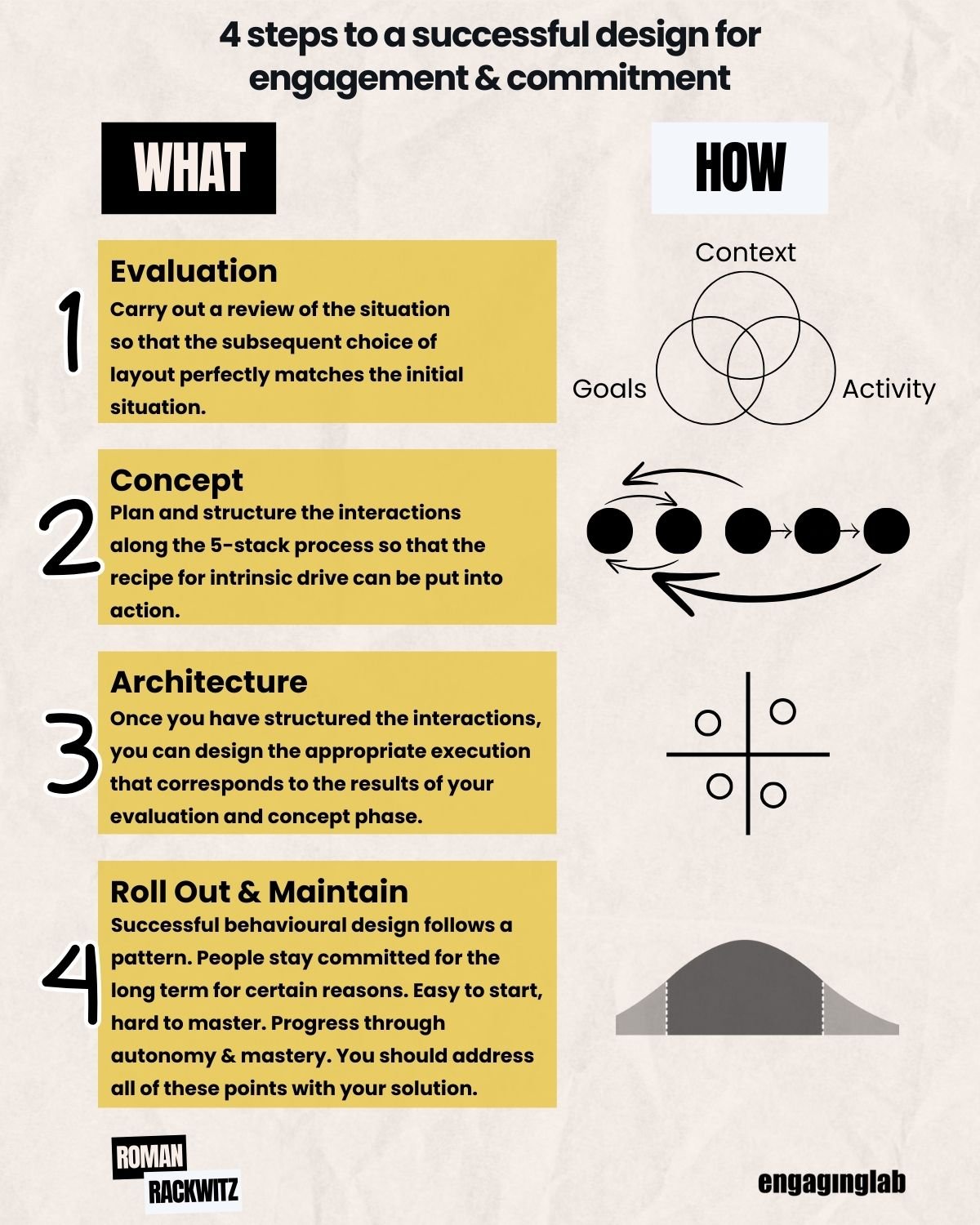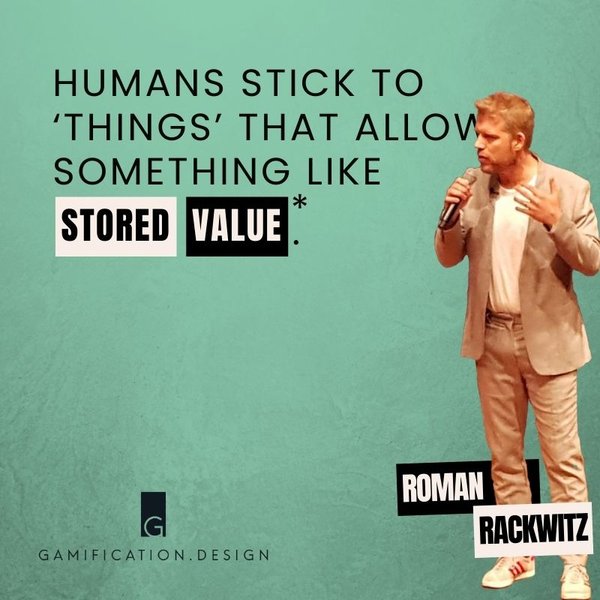THE 4-STEP-CHEAT-SHEET FOR SUSTAINABLE COMMITMENT DESIGN
0 comments

I've done several projects over the past few years, and each time I use this method to figure out if it's worth starting.
(Or whether I should recommend that the customer not do it)
This 4-Steps-Cheat-Sheet will help you validate a viable deployment and then design accordingly.
ECAR is the framework with which you can implement such a project and control it in a planned and measurable way.
Here's the breakdown...
↳ 1. Check your situation:
Is a given context suitable for effective & sustainable engagement design?
The three variables to examine: context, activity, goals
- Context: What opportunities for design do the prevailing framework conditions offer.
- Activity: What type of interaction is the activity suitable for? (according to the SDT theory)
- Goals: Find out whether your situation is something that people are willing to focus on pursuing (cognitive), or whether the interest lies purely in the outcome of a given process (repetitive).
↳ 2. Build the concept:
Can you build the 5-stack process into the situation?
- Curiosity: It begins with identifying multiple opportunities for curiosities, within the activities at hand. This is the initial spark for any pursuit of commitment.
- Interest: The next step is to intersect these curiosities to find where they overlap. This intersection can ignite a stronger, more sustainable interest.
- Purpose: Interest evolves into purpose when you apply your interests to something larger than yourself. This gives your pursuits direction and meaning.
- Autonomy: The drive to direct our own lives. It's crucial for engagement and motivation.
- Mastery: The urge to get better at the things we care about. It involves setting stretch goals, receiving immediate feedback, and developing a growth mindset.
↳ 3. Crafting your architecture:
Strategically decide on the appropriate architecture for the context you have assessed and tailored the 5-stack concept to. (For more information on this, see my YouTube video titled “Action Axis”.)
↳ 4. Achieve Results:
Pay attention to the
- Requirements for the initial rollout of the project
- the proven logic of onboarding users (according to their categorization)
- Control how your solution unfolds over time in front of the individual user, and thus addresses and retains them individually according to their level of maturity.
- Decide early on how the user will be 'bridged' within your design or even offboarded when a desired milestone is reached.
Follow this 4-step system (in the right order) and you can create interactions that are not only triggering and exciting in the short term, but also keep people happy doing something in the long term.
Share this with someone for whom the commitment of employees or customers is important. ♻️



Comments